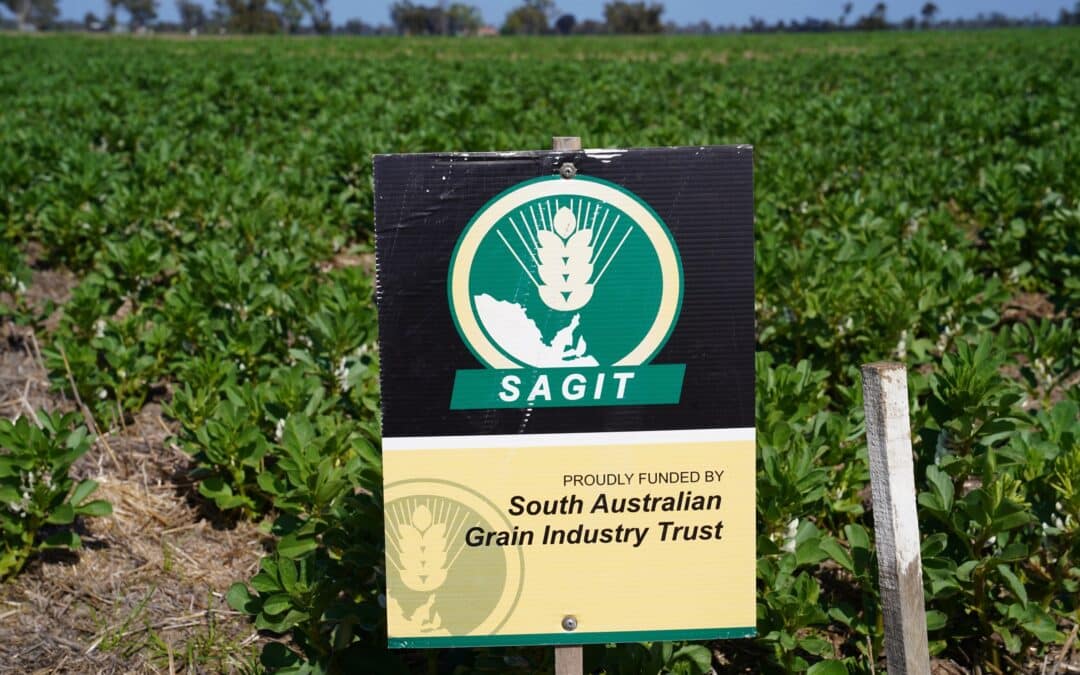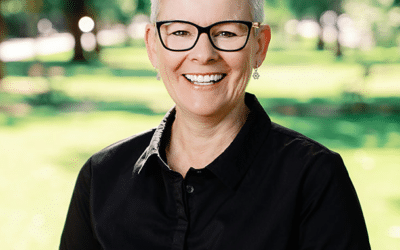Grain Producers SA (GPSA) and SAGIT have been reviewing the Grain Industry Fund (GIF) and Grain Industry Research and Development Fund (GIRDF) contribution method and rates to create a more equitable levy system while guaranteeing the future strong grower voice for members at a State and National level and securing long-term investment into research, development and extension critical to South Australian grain producers.
We have included the below FAQs as part of the consultation process.
To view the Proposal document and vote on the Proposal, visit the GPSA website.
1. What is the GIF and GIRDF?
The GIF was established by legislation in 2012 to ensure the interests of South Australian grain producers are strongly represented and their voice is heard by the State and Federal governments and other key stakeholders. Grain Producers SA applies to this fund annually and has been successful in its application since GPSA’s inception, meaning the State Government recognises GPSA as the organisation that best represents South Australian grain producers.
GIF funding has also allowed GPSA to join other State Based agricultural commodity groups (e.g. winegrapes, livestock, horticulture) via our membership of and participation in Primary Producers SA. This allows a united cross-sectorial voice on many issues important to South Australian primary producers more generally, including workforce, transport, infrastructure and employment legislation.
Many issues important to the grain industry are covered by national policies and legislation. Funds from the GIF are also used (through GPSA) to represent South Australian grain producers at the national level through Grain Producers Australia and the National Farmers Federation.
The GIRDF was established by the Primary Industry Funding Schemes (Grain Industry Research and Development Fund) Regulations. Growers first made voluntary contributions in 1983 for grain research at the rate of 12 cents per tonne under the former Grains Research Trust Funds Act. When the Grains Research and Development Corporation was established in 1990, the Federal Government agreed to return the money collected from SA growers to them – a total of $4.066 million – provided it was spent on wheat and barley research. A proposal was developed by the former United Farmers and Stock Owners to establish a trust to manage the returned funds. The new trust became responsible for the SA Grain Industry Trust Fund and collection of the levy continued.
On average, the SA Grain Industry Trust invests $2 million a year (from the GIRDF) in supporting research crucial to advancing South Australia’s multi-billion-dollar grain industry. These projects deliver real improvements in countless areas of grain production including, farming systems, soil management, harvesting, storage, processing and marketing, and providing technical information to growers.
2. Why is GPSA looking to change the current contribution model and rate on both the GIF and GIRDF?
The current levy contribution calculation method has not changed for many years and is neither equitable nor fit for purpose in the current grain production environment. The total contributions have remained static on a long-term average. The demands on GPSA continues to grow with greater need for advocacy on key policy issues that impact the current and future profitability and sustainability of South Australian grain growers. There is also inequity between contributions with the grain producers growing more but receiving less return, paying the same amount as a grain producer growing less but receiving more for their grain.
A grower receiving $400 per tonne for their grain is paying the same amount to the GIF and GIRDF as someone receiving $1000 per tonne. By changing the calculation method, we believe we can make a fairer system for all.
Through the impact of inflation, the cost of goods and services in Australia has increased over the past decade by more than 20 per cent yet the contributions to both GIF and GIRDF have remained static. Without change, GPSA’s ability to advocate for the benefit of South Australian grain growers will continue to diminish while research investment in real terms will continue to decline at a time where more innovation is needed to stay ahead of the declining terms of trade.
3. How was the proposed 0.10% for GIF and 0.12% for GIRDF ad valorem rate decided?
Grain Producers SA commissioned an experienced consultant to review various options and the history of grain pricing/trends etc and we used this information to consider every possible model for the GIF and GIRDF going forward. The proposed ad valorem rates will deliver a more equitable levy model while providing an adequate amount of funding to ensure GPSA is able to deliver for grain producers in South Australia on arising matters that will impact the way they operate (eg sustainability, government regulation) and be a strong voice for producers. Likewise, the proposed ad valorem rate for the GIRDF will deliver an uplift in funding for SAGIT to invest into critical research, development and extension projects designed to capture the opportunities of the future while managing the ever changing and increasing constraints.
4. What does 0.10% contribution to the GIF and 0.12% contribution to GIRDF look like? What does 0.10% contribution for the GIF look like?
$1 contributed in levies per $1000 of farm gate return
$10 per $10,000
$100 per $100,000
$200 per $200,000
$500 per $500,000
What does 0.12% contribution for the GIRDF look like?
$1.20 contributed per $1000 of farm gate return
$12 per $10,000
$120 per $100,000
$240 per $200,000
$600 per $500,000
5. Will this mean an increase in funds to GPSA and SAGIT?
Yes, this will give a much-needed increase to GPSA to continue enhancing its strong advocacy on the wide range of issues expected to be faced by South Australian grain producers. It will also provide SAGIT with the funds necessary to invest more appropriately in research, development and extension for the benefit of the South Australian grain sector.
6. How much will I be paying under the change and uplift?
For the GIF, based on 10 year average production and prices, setting the GIF at 0.1% (instead of 20 cents/tonne) is equivalent to an increase of $0.0857/tonne or just less than 9 cents per tonne. This would mean an increase from $0.20/tonne to 0.2857/tonne
For the GIRDF, based on 10 year average production and prices, setting the GIRDF at 0.12% (instead of 30 cents/tonne) is equivalent to an increase of $0.042/tonne or just over 4 cents per tonne This would mean an increase from $0.30/tonne to $0.342/tonne
7. How does GPSA and SAGIT receive these funds?
The GIF and GIRDF are collected, managed, administered, and distributed by the Minister for Primary Industries and Regional Development’s representative, PIRSA.
There is requirement for a management plan to be submitted as part of the application to apply for the funds under the GIF and GIRDF. The Minister decides how much to distribute according to how much is received and keeps a residual as a reserve for future low production and value years.
8. How are the funds invested?
Both GPSA and SAGIT publish fully audited financials in their annual reports. These reports can be found here:
9. Who is my local GPSA Director?
All GPSA Directors and SAGIT Trustees are listed on their webpages. They are also identified in the information package distributed to all GPSA members. We encourage everyone to speak to the Directors and SAGIT Trustees about this proposal and how it will work.
10. How do I know if I’m a member of GPSA?
You are a member of GPSA if:
- You grow grain and sell it to a grain trader/broker who deducts the 20 cents p/tonne contribution from your payment; and
- You have signed a GPSA membership form with your NGR number.
You are not a Member if:
- You withdraw your voluntary contributions to the GIF through PIRSA or resign from your GPSA membership.
11. When is this contribution paid?
Grain traders/brokers deduct the GIF and GIRDF from your payment and forward it to PIRSA by 30th June each year.
12. Who decides the rate and calculation of the proposal being presented to the Minister for consideration?
The GPSA Board is made up of eight Directors, seven of those are grower Directors spanning across the growing regions of South Australia. The Board has investigated and examined all calculation methods with a view to equity and fairness and increasing contributions, including by tonne and by value. GPSA is undertaking an extensive consultation process with its members to see whether they support moving to a value-based rate of collection with an uplift in the contributions provided. All feedback from GPSA members will be considered as part of the consultation prior to a final summary being presented to the South Australian Minister for Primary Industries and Regional Development. Likewise, the Trustees of SAGIT have considered the required uplift needed to keep pace with demand for critical research, development and extension in the South Australian grain industry into the future.
13. What is current practice in terms of the timing of fund collection?
Grain purchasers are required to remit deductions using a remittance form by the 28th day of the month, following the month the grain was purchased.
You can apply to pay your contributions on a quarterly or yearly basis. Approvals will only be given if:
- your remittance of contributions is up to date
- the grain purchaser is not seen to be exploiting the guidelines
- we are satisfied that your total annual turnover of contributions does not exceed these limits:
- less than $7,000 (up to 5,000 tonnes) paid annually
- between $7,000 and $15,000 (5,001 to 15,000 tonnes) paid quarterly
- more than $15,000 (more than 15,001 tonnes) paid monthly.




